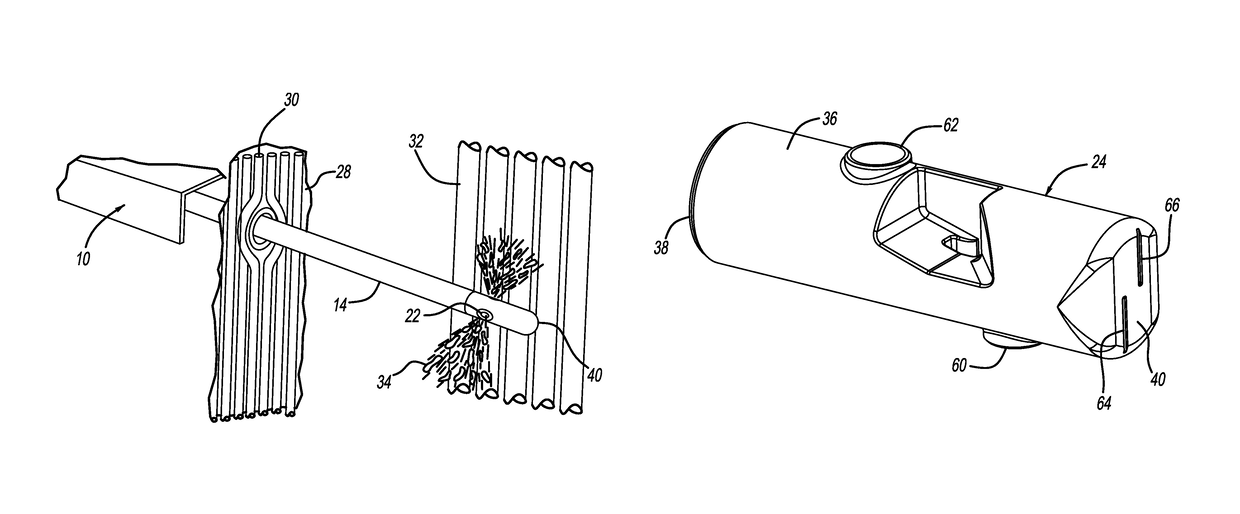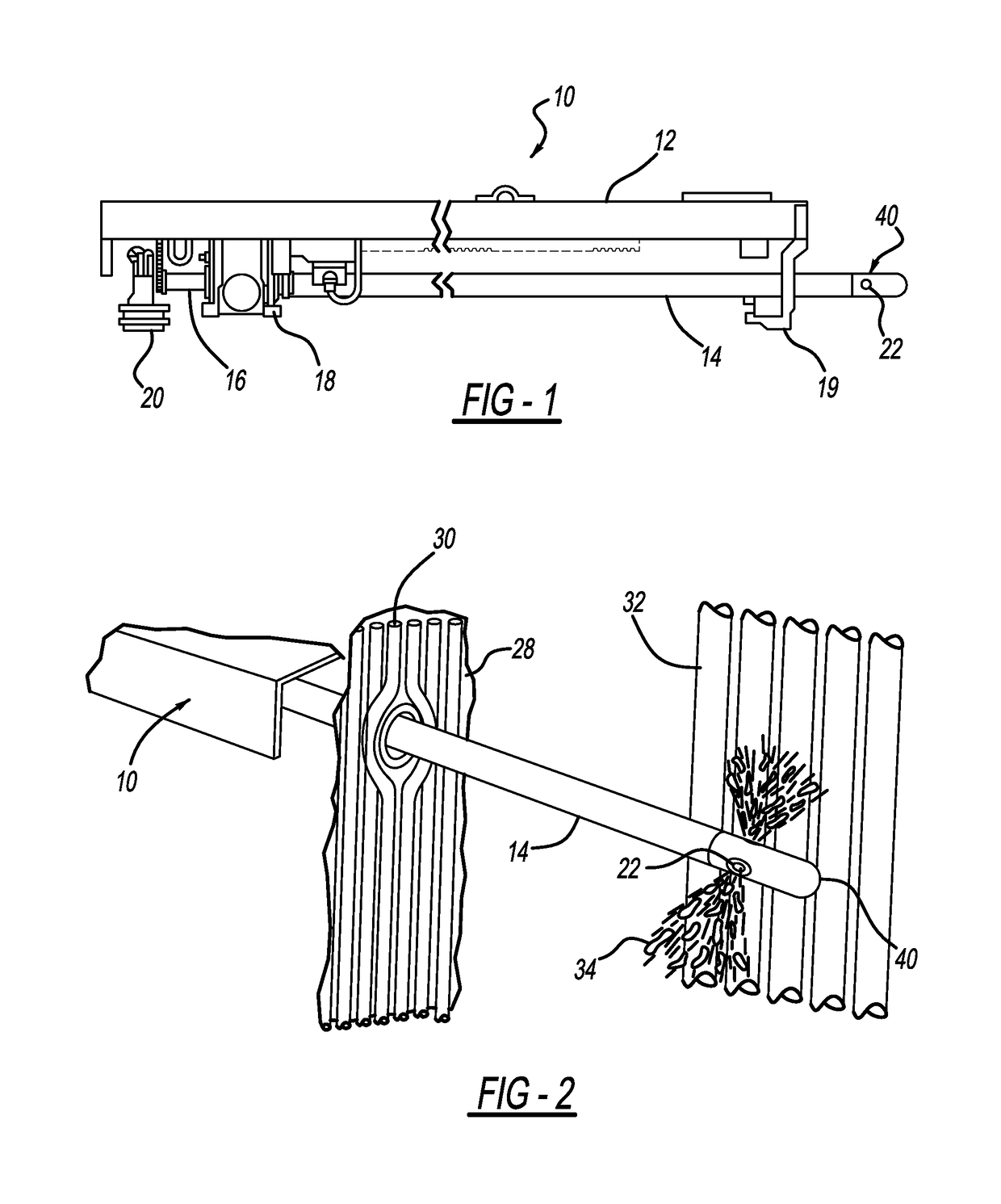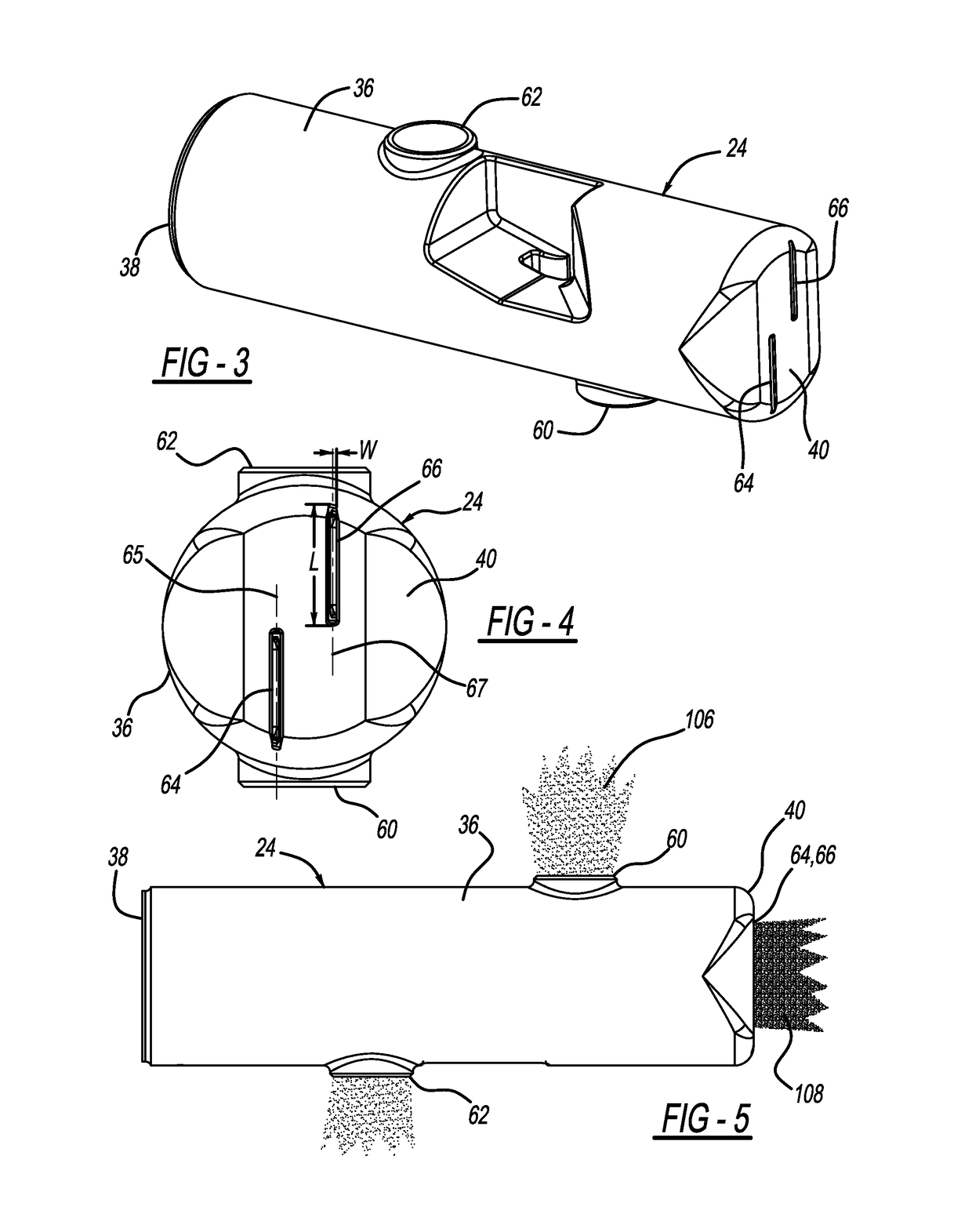Condensate removal sootblower nozzle
a technology of condensate and blower, which is applied in the direction of flush cleaning, cleaning using liquids, lighting and heating apparatus, etc. it can solve the problems of excessive thermal and mechanical shock, slag and soot on the internal heat exchange surface of the boiler and other combustion devices, and achieve excellent performance, high dynamic cleaning effect, and reduced condensate quantity
- Summary
- Abstract
- Description
- Claims
- Application Information
AI Technical Summary
Benefits of technology
Problems solved by technology
Method used
Image
Examples
first embodiment
[0032]A nozzle block 24 in accordance with the present invention is illustrated in FIGS. 3 through 6 and is formed from a body or housing 36. Preferably, body 36 is formed by a casting process as will be described in further detail in the following description. Nozzle block 24 forms proximal end 38 which is affixed to a hollow lance tube 14 such as by welding. Distal end 40 is the terminal end of the lance tube assembly. Body 36 forms two internal cleaning medium passageways formed by internal wall surfaces referred to as first nozzle passageway 42 and second nozzle passageway 44. These passageways are separated by divider wall 46 extending along a diametric center plane 68 of nozzle block body 36. After cleaning medium flows into lance tube 14 and reaches divider wall 46, two separated flow streams of cleaning medium are created. For both passageways 42 and 44, the cross-sectional flow area of the flow passageway decreases from the entrance at divider wall 46 and becomes necked dow...
second embodiment
[0044]a nozzle in accordance with this invention is shown in FIGS. 14A and 14B and is generally designated by reference number 90. Nozzle block 90 does not feature the reverse direction flow paths of the previously described embodiment and does not provide a separation between two nozzle flow paths. Instead, nozzle block 90 is a cast structure in which the inside cavity of the nozzle block 90 is restricted and causes the flow of cleaning medium to undertake an approximately 90° turn at distal end 94. Nozzle block 90 uses some of the features provided by applicant's previously issued U.S. Pat. No. 6,764,030 (which is hereby incorporated by reference) in that it provides a smooth flow passageway for the cleaning medium to increase nozzle cleaning efficiency.
[0045]Nozzle block 90 incorporates one principal feature of the present invention for the ejection of condensate; namely, slot 96. Nozzle block 90 may feature a second nozzle outlet (not shown) positioned upstream of the distal end...
PUM
 Login to View More
Login to View More Abstract
Description
Claims
Application Information
 Login to View More
Login to View More - R&D
- Intellectual Property
- Life Sciences
- Materials
- Tech Scout
- Unparalleled Data Quality
- Higher Quality Content
- 60% Fewer Hallucinations
Browse by: Latest US Patents, China's latest patents, Technical Efficacy Thesaurus, Application Domain, Technology Topic, Popular Technical Reports.
© 2025 PatSnap. All rights reserved.Legal|Privacy policy|Modern Slavery Act Transparency Statement|Sitemap|About US| Contact US: help@patsnap.com



